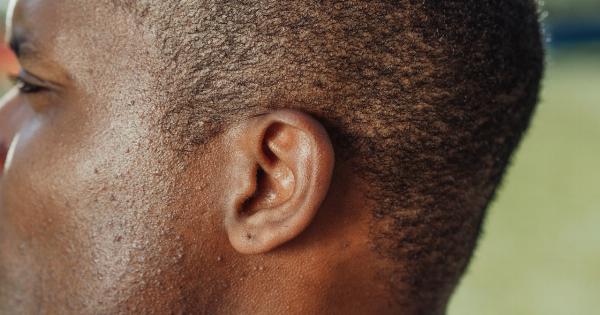Healthcare coverage is designed to provide financial assistance for medical expenses, ensuring individuals can receive necessary treatment and support without incurring overwhelming costs.
However, understanding the specifics of coverage can often be challenging, especially when it comes to disfigurements and hearing loss. In this article, we will delve into the various aspects of healthcare coverage related to these conditions, ranging from diagnosis and treatment to accessibility and insurance policies.
Diagnosis and Treatment of Disfigurements
Disfigurements can result from a variety of causes, including accidents, birth defects, or medical conditions. These physical abnormalities often lead to both functional and psychological challenges for individuals.
Diagnosis of a disfigurement involves comprehensive medical evaluations and assessments, which can include imaging tests, consultations with specialists, and genetic testing if necessary.
When it comes to treatment, options vary based on the specific disfigurement and its severity. Surgical procedures are commonly employed to correct or improve physical appearance, restore functionality, or alleviate associated health problems.
Reconstructive surgeries, skin grafts, prosthetics, and other specialized interventions contribute to the management and rehabilitation of disfigurements.
Healthcare Coverage for Disfigurements
In many cases, healthcare coverage includes provisions for the diagnosis and treatment of disfigurements. However, the specific coverage varies depending on the insurance provider and the policy.
As a result, it is crucial for individuals with disfigurements to familiarize themselves with their insurance plans and understand the extent of coverage.
Most insurance plans cover medically necessary procedures to correct or improve disfigurements, ensuring individuals can access the treatment they need.
However, cosmetic procedures, which aim solely to enhance physical appearance, are often excluded from coverage unless there are exceptional circumstances that necessitate their inclusion.
In addition to surgical interventions, healthcare coverage for disfigurements may also include provisions for psychological support and counseling.
Mental well-being is integral to the overall management of disfigurements, and providing access to necessary psychological services is essential for the holistic care of affected individuals.
Understanding Hearing Loss
Hearing loss is a prevalent condition that can significantly impact individuals’ quality of life. It can be caused by various factors, such as aging, exposure to loud noises, certain medications, infections, or genetic predisposition.
Regardless of the cause, hearing loss affects individuals’ ability to communicate and navigate their daily lives.
Diagnosing hearing loss involves comprehensive audiological assessments, including audiograms, speech tests, and evaluations by hearing healthcare professionals.
These tests help determine the degree and type of hearing loss and guide appropriate interventions.
Treatment options for hearing loss range from hearing aids and assistive listening devices to cochlear implants for those with severe or profound hearing loss.
Additionally, auditory training, speech therapy, and counseling are often recommended to aid in communication and adaptation to the challenges of hearing loss.
Healthcare Coverage for Hearing Loss
Understanding the coverage provided for hearing loss is essential for individuals seeking intervention and support. In many cases, insurance plans offer coverage for hearing assessments, hearing aids, and other assistive devices.
However, the extent of coverage and reimbursement can vary between insurance providers and policies.
While some insurance plans cover hearing aids partially or in full, others may exclude coverage for adults or restrict coverage to specific models or technology levels.
It is crucial for individuals to review their insurance policies and understand the terms of coverage for hearing-related services and devices.
Furthermore, some insurance plans may require pre-authorization or a referral from a primary care physician to access hearing-related services.
Individuals should proactively communicate with their insurance providers, inquire about coverage options, and submit any necessary documentation to ensure smooth and timely reimbursement.
Accessibility of Healthcare Services
Accessibility to healthcare services is a critical aspect to consider when seeking treatment for disfigurements or hearing loss.
It is essential to ensure that healthcare providers, facilities, and specialists are not only covered by insurance but also conveniently located.
Individuals should review their insurance networks to find specialists experienced in treating disfigurements or hearing loss within a reasonable distance from their residence.
Some insurance plans may require individuals to obtain referrals or seek treatment exclusively within their network, limiting options for care.
In addition, seeking out healthcare providers who are knowledgeable about the specific conditions and experienced in their treatment is crucial.
Experienced specialists can provide comprehensive evaluations, accurate diagnoses, and personalized treatment plans to maximize the potential for successful outcomes.
Insurance Policies and Coverage Limitations
When it comes to healthcare coverage for disfigurements and hearing loss, it is important to carefully review insurance policies to understand their limitations. Here are some factors to consider:.
- Network Limitations: Check whether your insurance plan requires you to seek treatment within a specific network of healthcare providers.
- Covered Procedures: Determine which procedures related to disfigurements or hearing loss are covered, including surgeries, diagnostic tests, and supportive services.
- Pre-authorization Requirements: Some insurance plans require pre-authorization for certain procedures or testing. Understand these requirements to ensure smooth coverage.
- Reimbursement Rates: If your insurance plan covers hearing aids or prosthetics, be aware of any cost-sharing ratios or limitations on reimbursement amounts.
- Documentation and Paperwork: Familiarize yourself with the necessary documentation and paperwork required for claim submissions and reimbursement approvals.
- Appeals Process: Understanding the appeals process and your rights as a policyholder can be invaluable if there are disagreements or denials regarding coverage.
Conclusion
When it comes to healthcare coverage for disfigurements and hearing loss, understanding the specifics of coverage is crucial for individuals seeking diagnosis, treatment, and support.
By familiarizing themselves with insurance policies and network limitations, individuals can ensure that necessary procedures, devices, and services are accessible and covered.
Regular communication with insurance providers, healthcare professionals, and specialists experienced in treating disfigurements and hearing loss is essential for navigating the complex landscape of healthcare coverage.





























